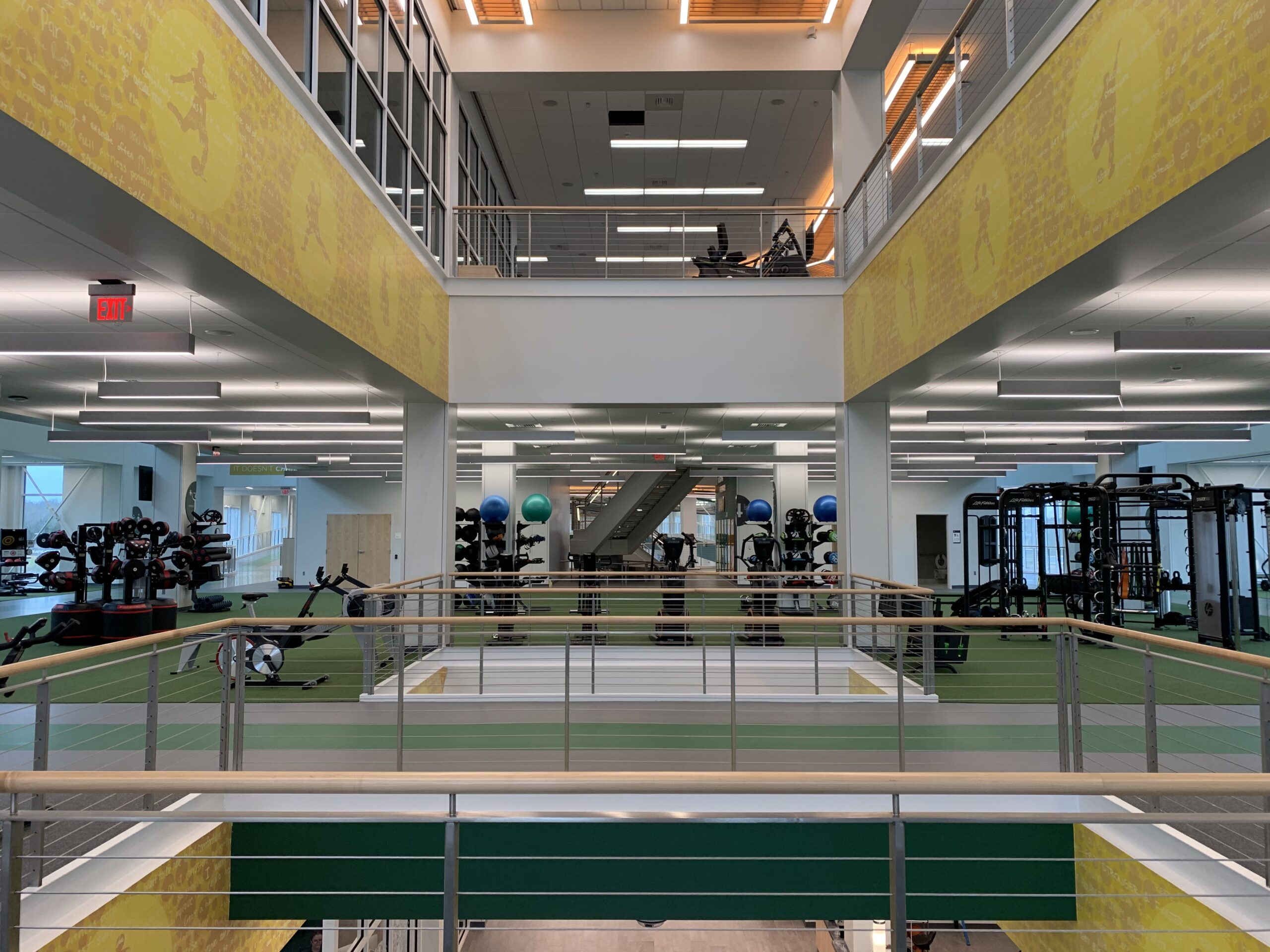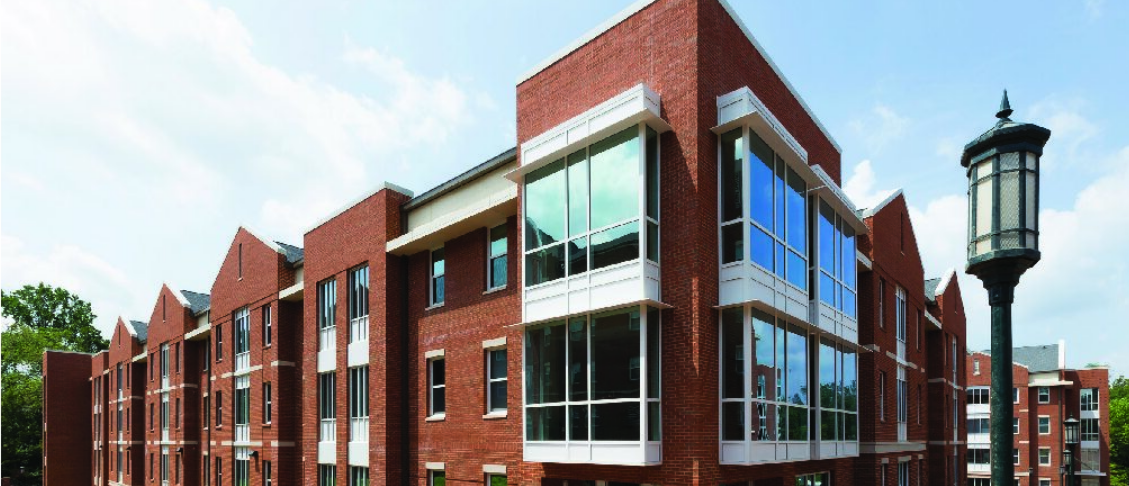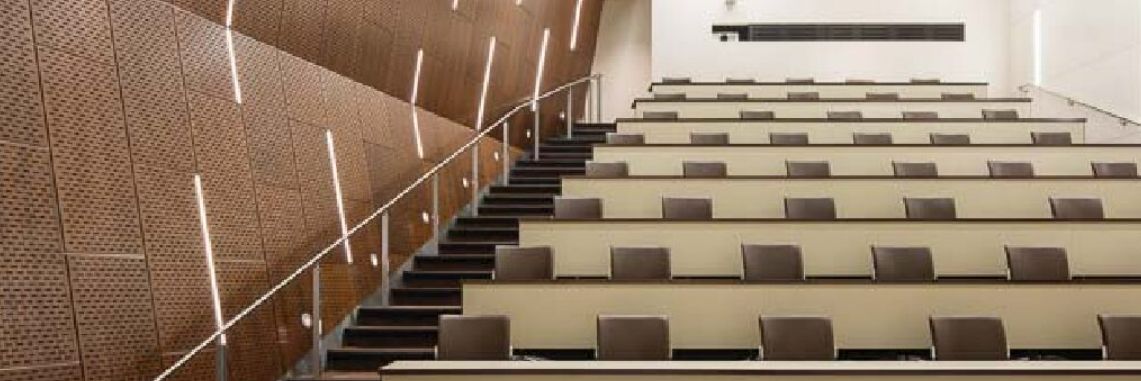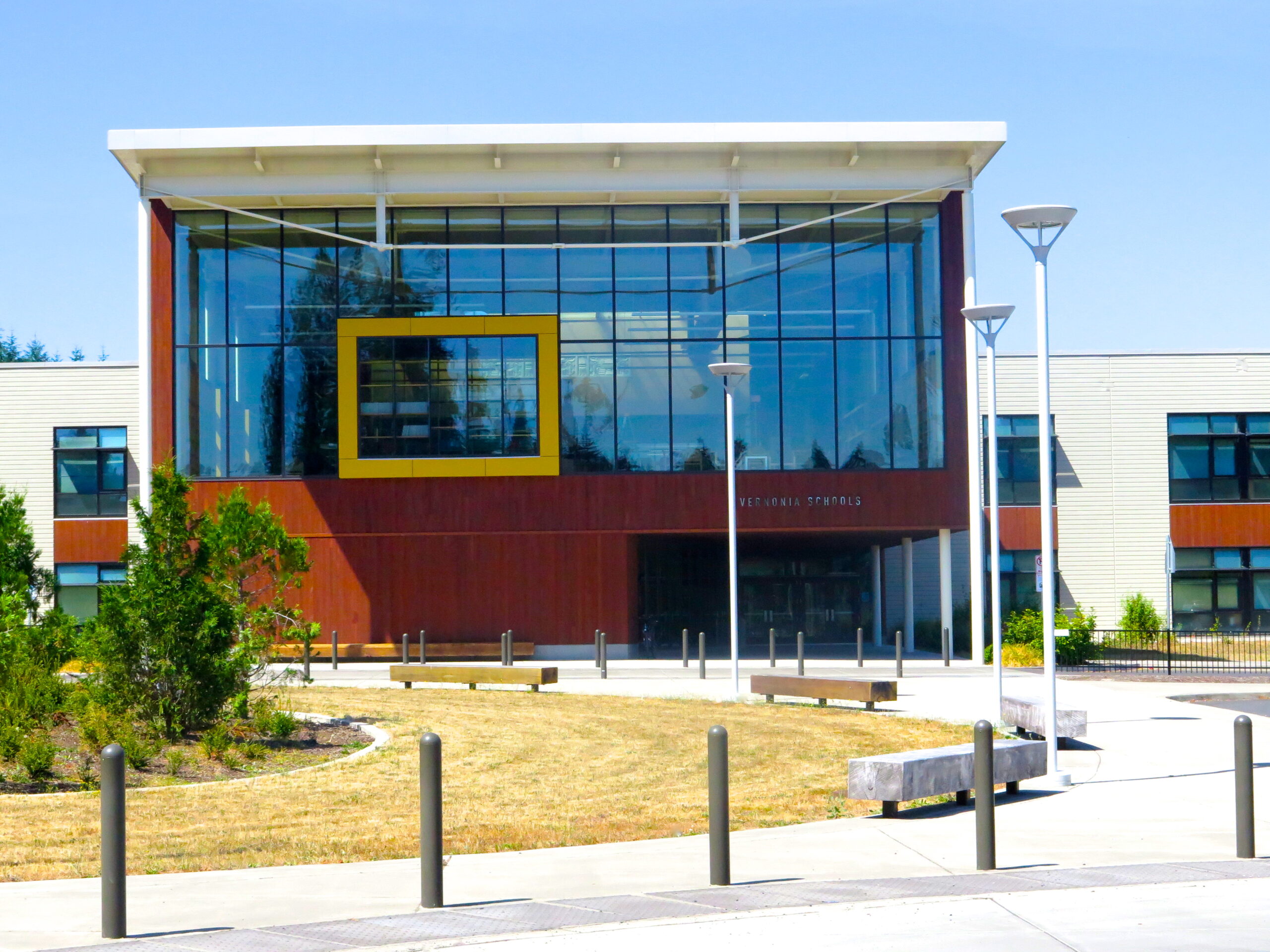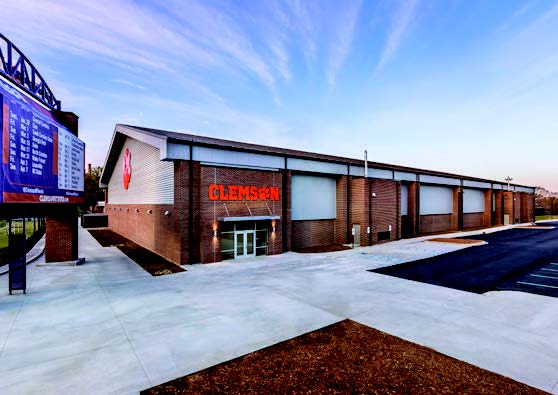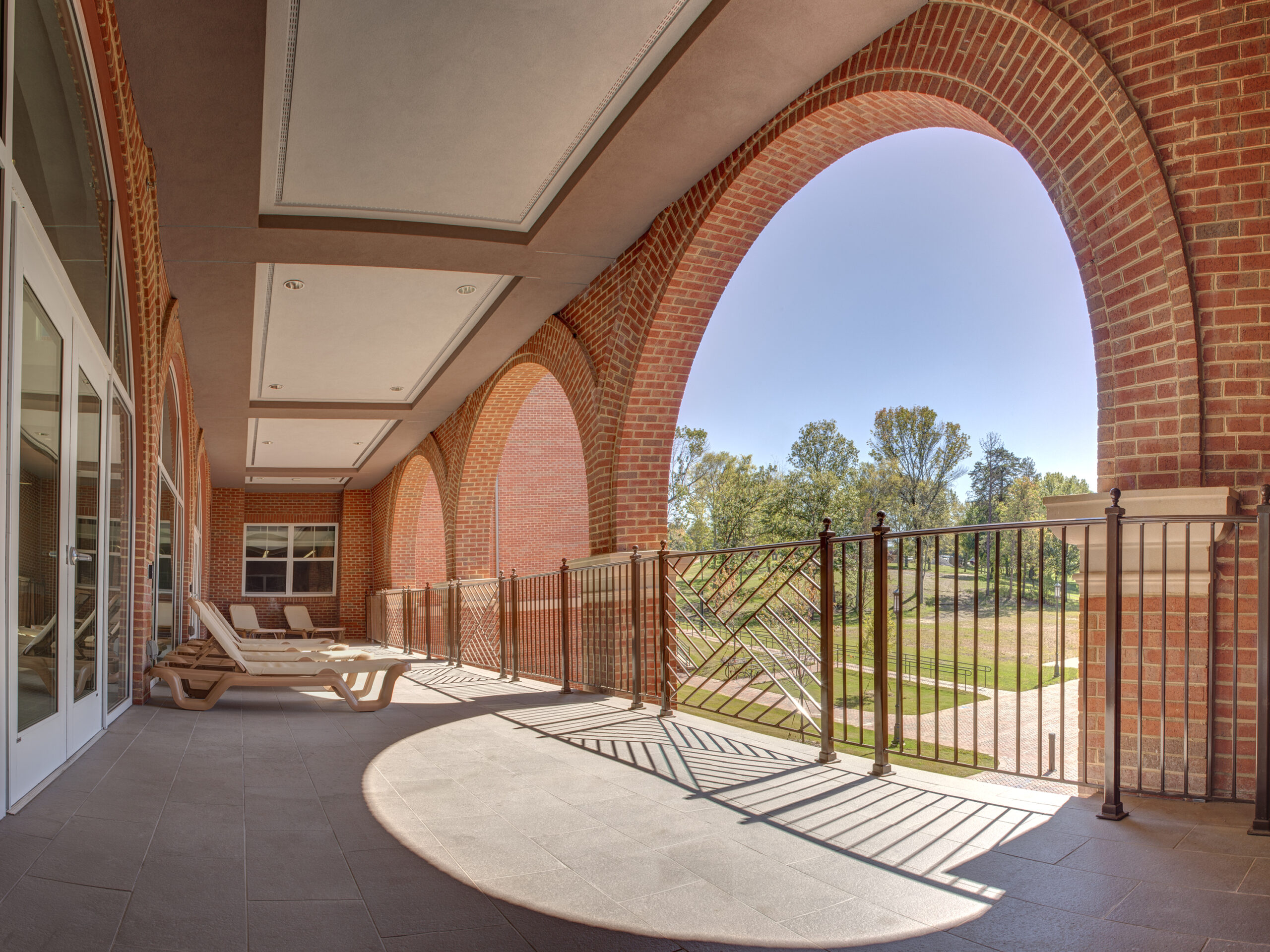“The health and wellness trend is huge for today’s students, and our facilities have to remain competitive,” asserts Jim Walczyk, Director of University Recreation at UNC Charlotte.
“It’s way beyond my expectations.. I love to see the impact it has. Watching students smile and find ways to relieve their daily stress is very rewarding.”
The state-of-the-art facility features two pools (one indoor and one outdoor), four multipurpose courts, a full range of fitness equipment, an elevated track, and outdoor terraces with campus views. Students also care about sustainability, which is one reason UNC Charlotte sought Green Globes certification on the University Recreation Center. Shortly after Jenkins • Peer Architects completed its schematic design for the new center, it turned to the Green Globes online checklist.
“We sat down with representatives from University Recreation, Facilities Management and the campus sustainability group to look at options from the online checklist that we thought made sense to pursue,” recalls Dan Van Dyke, principal at Jenkins • Peer Architects.
Taylor Jarrell was Jenkins • Peer Architects’ point person for the Green Globes certification. “One area where we pushed the boundaries was on materials,” she says. In fact, the project’s high scores in the Resources category were part of a strong inventory that helped the University Recreation Center achieve Two Green Globes.
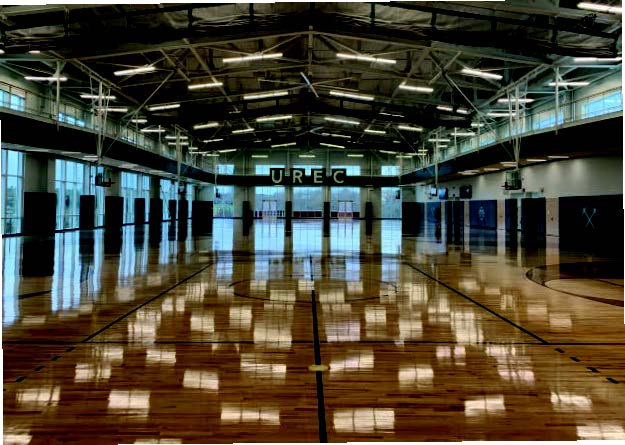
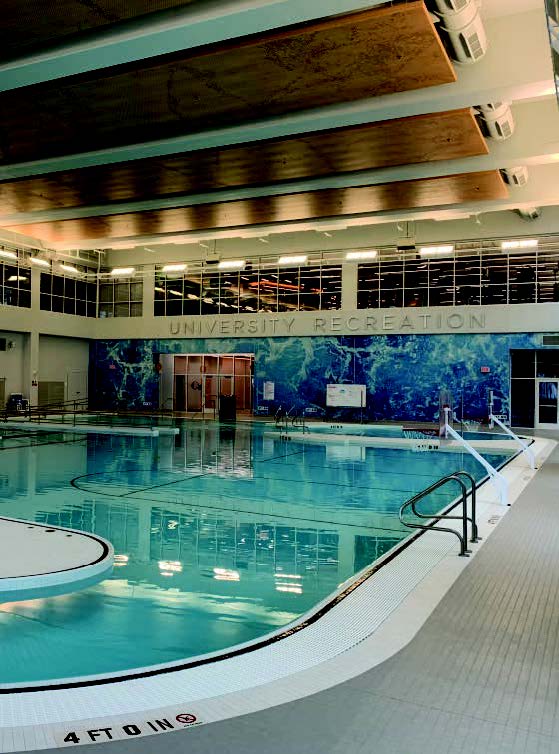
- A life-cycle cost analysis was performed for core and shell materials.
- The facility incorporates high-performance coatings with no VOCs.
- Triple glazing units enclose the natatorium and special coating on the area’s concrete masonry units provide separation from the indoor pool’s humid environment to the rest of the building.
- Commissioning agents were brought on board at the end of the design phase (not just construction) to ensure all systems were properly installed and operating.
Clear Vision
Extensive glazing on the building generates excitement both inside and out. “The students really wanted the building to be transparent so everyone who passed by it could see the activity taking place among the surrounding academic buildings,” Walczyk says. “And when you’re inside, you almost feel like you’re outdoors.”
Because the heated swimming pool makes the natatorium warm and humid, the team paid special attention to energy efficiency measures there. “Finding the right materials for the natatorium’s glazing was exciting because we wanted it to be ultra-clear yet still high performance,” Jarrell recalls. “We reviewed a lot of samples during design to get both efficiency and transparency.”
Clarity was something Jarrell appreciated in the Green Globes process too. “Having the Assessor as a point of contact made for really open communication,” she says. “It was nice to have someone respond to emails and questions even early on in the design phase.”
At the beginning of the on-site walkthrough, the project representatives sat down with the Assessor to review any outstanding items. Then, on the tour, the Assessor took photos of items he was able to field verify to serve as their needed documentation.
“The stage II verification was the most valuable part of the process for me,” Jarrell says. “At the end of the project, you need a final meeting to make sure you have all your ducks in a row.”
The resulting center is an environmentally responsible facility that brings joy to the students. “It’s way beyond my expectations,” Walczyk notes. “I love to see the impact it has. Watching students smile and find ways to relieve their daily stress is very rewarding.”
